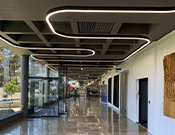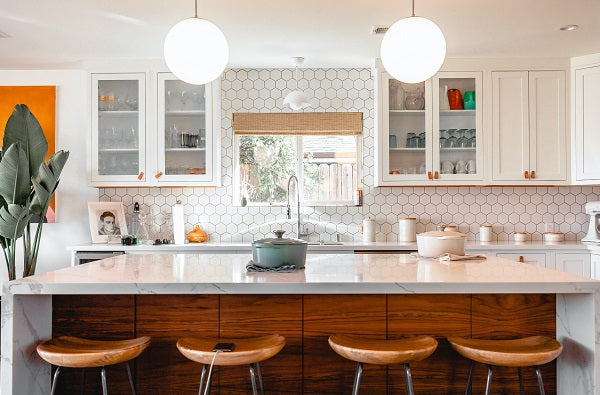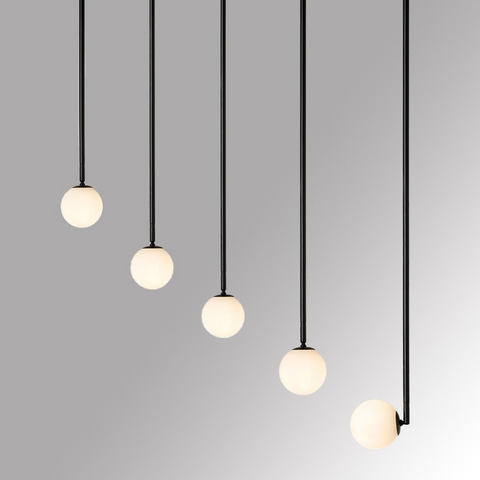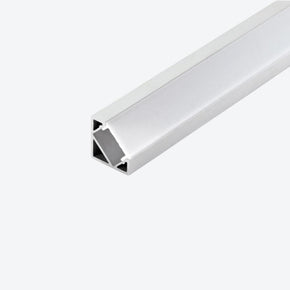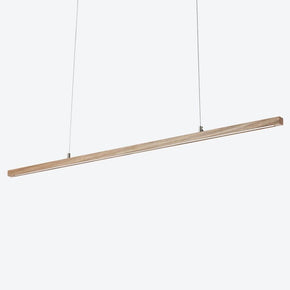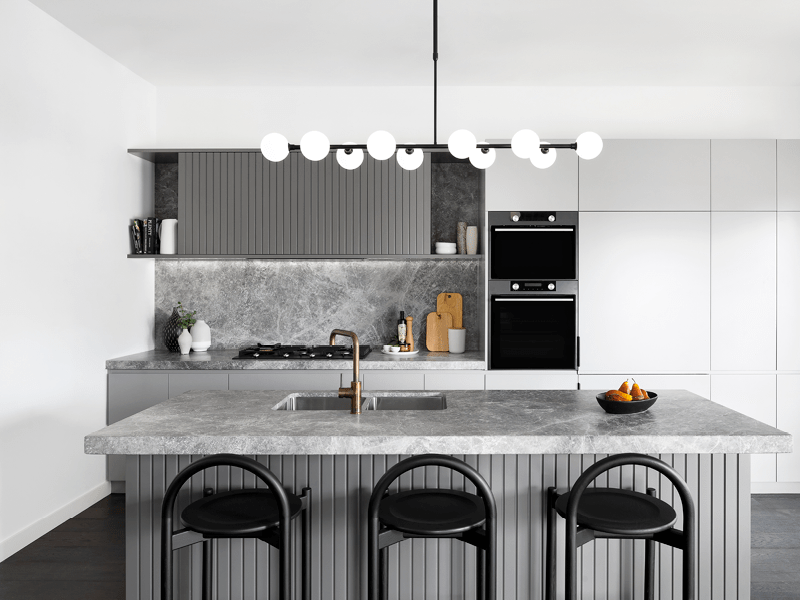- No products in the cart.
- ``
How to style your kitchen with perfect pendant lighting
14
Apr
For many families, the kitchen is the heart of the home. From coffee in the morning to dinner at night, the kitchen plays many roles. Because the kitchen is often the central gathering point of the home, it needs lighting that’s not only practical but also visually appealing. Pendant lights tick both boxes, combining functionality with designer style.
But with so many styles to choose from, how do you pick the right light for your kitchen?
We help you create a warm and inviting space that everyone can enjoy with this handy guide to picking the perfect pendant.
Choose your illumination
The kitchen serves many functions, so the type of pendant you choose will depend largely on the type of illumination you need - task, ambient or decorative.
Task lighting
If you need to illuminate a certain area of the kitchen so you can see better when completing a task, then you need task lighting.
If you want your pendant to provide task lighting, such as illuminating your kitchen bench when you’re cooking, pick a pendant that emits a lot of light and spreads it widely across the area. Glass pendants are a great option for broad lighting because they provide no barrier to light being emitted.
However, when using a pendant for task lighting, you’ll want to make sure you use a lower output bulb or install a dimmer to avoid harsh lights when you are entertaining.
Ambient lighting
If you’re after ambient lighting - or lighting that illuminates the whole room - consider installing multiple pendants throughout the space, rather than one single pendant. This will help to spread the light evenly throughout the kitchen.
Decorative lighting
Your decorative lights can also provide task and ambient lighting, but it doesn't need to. If your kitchen already has enough task and ambient lighting, you could choose to install a decorative pendant just to make an impression. If your pendant’s function is purely decorative, opt for a light with a soft glow, so as not to distract from the kitchen’s task and ambient light sources.
Choose your finish
Pendant lights come in a variety of colours and finishes, from subtle and understated to bold and dramatic, so the colour and finish you choose will depend largely on the design of your kitchen.
When choosing your pendant, consider tying it into the decor of your kitchen by picking a finish that matches other materials in the room - for example, a pendant with a brass finish that matches the handles on your cabinets. You could also integrate your lighting in a more subtle way by matching it to other features in your room, such as the fabric on your dining chairs. If you’re trying to soften your space, choose a finish that’s more natural or organic, such as a timber or woven shade. A fabric shade will also diffuse the light for a softer ambience. However, fabric may be harder to clean in a kitchen space.
If you’re after a bolder look, you could pick a brightly coloured pendant to add a touch of colour. This works particularly well when contrasted with a neutral colour palette. Or if you’d like to really make a statement, pick an over-sized sculptural pendant that’s sure to start conversations.
Choose your position

The location of your pendant in your kitchen will depend on the function of the light. If you’re using a pendant as task lighting, you’ll want to position it directly above the work area, such as above a kitchen sink or stovetop.
If you’re using your pendants for ambient lighting, on the other hand, you’ll need to space them throughout your kitchen to spread the light evenly.
A popular spot for hanging a pendant is over a dining table or kitchen island because you can generally hang them lower without the risk of obstructing walkways. Just don’t hang them too low if you still want people to be able to talk to each other across the dining table.
If hanging multiple pendants, you can choose to evenly space them above a kitchen island or dining table to create a modern and balanced look. Another option is to cluster contrasting pendants in one spot to create a visually striking kitchen feature.
Choose your height
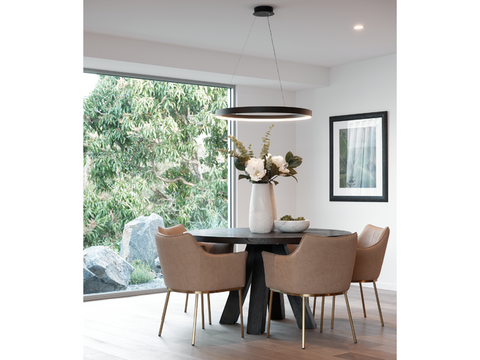
This is the most critical aspect of installing your pendant lights. Large pendants should be positioned higher in a space, while small lights can be hung lower.
If positioned too low, large pendants can obstruct the view across the room, and they tend to dominate the space. On the other hand, pendant lights placed too high can get lost in the space, and may struggle to emit enough light.
If you’re using your pendant as task lighting (for example, above a kitchen sink or meal prep area), you should hang them about 1.8 metres from the floor. Pendants above eating areas can be hung a little lower at about 1.5 metres from the floor.
You should also keep in mind the style of the fixture. If you position your pendant too high, you may be able to see the exposed bulb, and if your pendant light includes a decorative chain, you’ll want to hang it slightly lower so you can see more of the chain.
Choose your size
Consider the size of your kitchen before picking the size of your pendants. As a general rule, the bigger the kitchen, the bigger your pendant lights can be.
If your ceiling is above 2400mm it’s safer to go with a large piece - oversized feature pendants are generally better suited to large airy kitchens. If, on the other hand, you have a smaller kitchen, you might want to choose something a little less obtrusive. Large pieces can look cluttered in a small room, while also restricting lines of vision.
Keep in mind that bigger is not always better - small pendants are great for providing bright light, while not dominating the space. It’s often a good option for kitchens that already have a visual feature that you don’t want to distract from.
How to choose the perfect pendant lighting for your kitchen
About Space stocks a comprehensive range of contemporary pendant lights for the kitchen, including task, ambient and decorative pieces. Shop our comprehensive range of pendant lights to find the perfect lighting solution for your kitchen.






